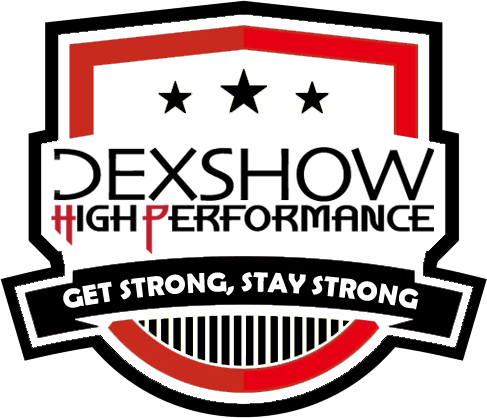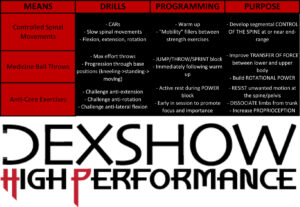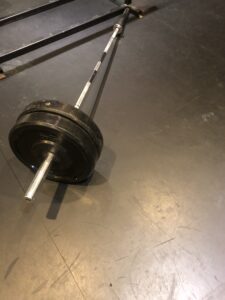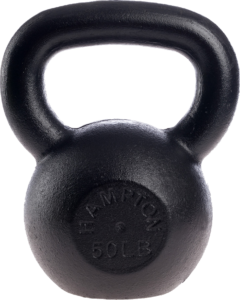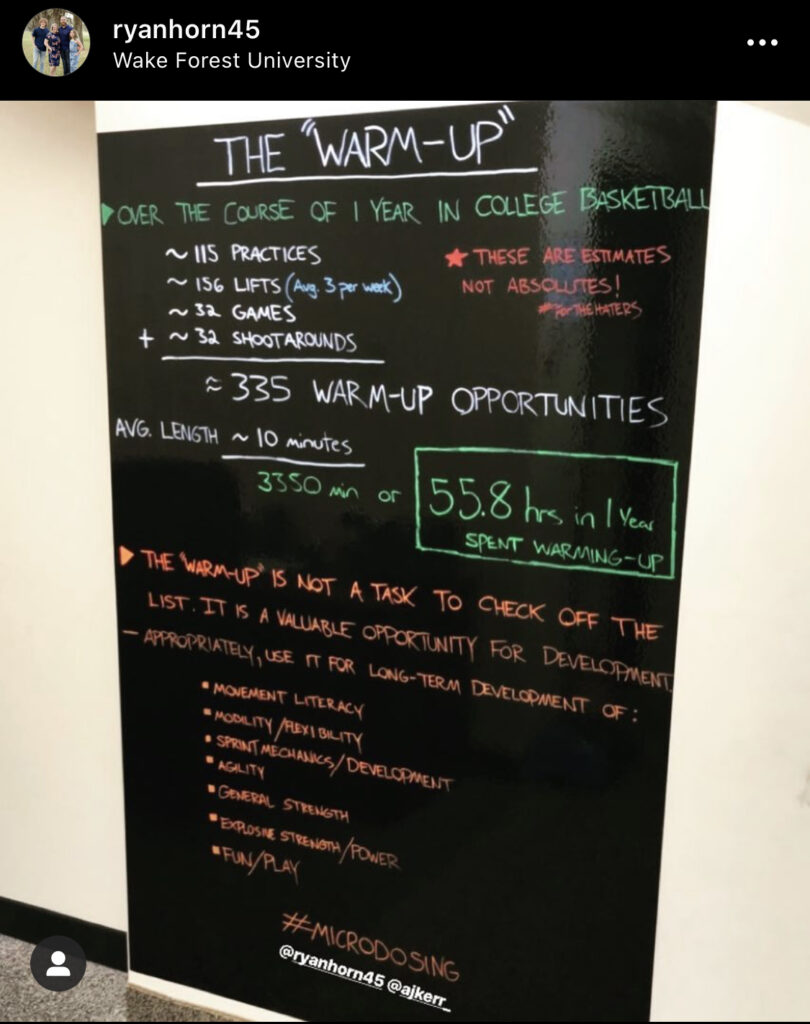
It’s that time of year again and the hockey season is upon us. Most of my Junior and college players have reported to their clubs after a solid off-season of training. I often get asked in-person, through text, or DM for a warm up routine to prepare for an on-ice session. Adequately preparing your body to perform the moment you hit the ice is an INTEGRAL PART of MITIGATING INJURY RISK, MAINTAINING OFF-SEASON TRAINING PROGRESS, and PRIMING PERFORMANCE. Look at the photo above – Director of Athletic Performance Ryan Horn of Wake Forest University posted it on his Instagram. It estimates that at 10 minutes per warm up, every one of his basketball players will perform OVER 55 HOURS of “warm up drills” over the course of the season. What an incredible opportunity to get better during a time when many athletes mail in or skip pre-sport warm up altogether. It’s a no brainer for development. It’s a no brainer for performance. It’s a no brainer for movement competency. Bring focus and intent and your body will reap the benefits of this stimulus.
The days of lying around and static stretching are long gone. Having access to some limited equipment can aid in pre-ice prep but for ease of use and to help the most people, here is an example of how I would structure my pre-ice routine (with no equipment besides a foam roller) if I was still playing:
1 - TISSUE PREP (5-8 minutes)
First things first, we want to prepare our tissues for the intense exercise that is sports. I like using two main pieces to do this with the intended result being increased parasympathetic response, improved proprioception and body awareness, as well as a heightened mental focus.
SELF MYOFASCIAL RELEASE (SMR)
SMR is essentially a self-massage using tools such as a foam roller, lacrosse ball, or other tools. Contrary to popular belief, SMR does not “break up scar tissue” or “work out the knots” (muscles don’t have knots). In fact, we really DON’T KNOW exactly what mechanism is at play during self myofascial release; but, we DO KNOW that it can decrease resting muscle tone, increase parasympathetic nervous system activity, and temporarily improve joint range of motion. Plus, it just feels good! For hockey players and goalies, we want to focus some extra attention on the quads, hip flexors, glutes, and adductors in the lower body and the thoracic (upper) spine, lats, and posterior shoulder in the upper body. Keep the roller moving or your body moving over the rolling – NO LAZY LYING ON THE GROUND WITHOUT INTENT.
FULL BODY CARs ROUTINE – 2-3 REPS OF EACH
Controlled Articular Rotations (CARs) are the second piece of the Tissue Prep block of the pre-ice warm up. I’ve written and posted extensively about CARs – you can watch the 7 episode tutorial series I made on Facebook HERE for instructions and cueing on CARs for each joint. CARs take our joints through their full, active range of motion and increase communication happening inside our bodies from receptors in our joint capsules to our brains. While performing well-executed CARs, we are gently exposing our joints to their outer limits of mobility in a safe way which allows us to learn where our bodies are in space and prepare for some of the extreme movements performed on-ice. If time is a constraint pre-ice, I’d stick to SCAPS, SHOULDERS, SPINE, and HIPS.
2 - MOBILIZE (3-5 minutes)
Next, we want to move into some specific MOBILIZATIONS for the joints/areas that have the highest demand as goalies: HIPS, SPINE, SHOULDERS.
MULTI-DIRECTIONAL HIP MOBS – 3 ROCKS IN EACH POSITION, ON EACH SIDE
Think of these as active stretches where we push/pull ourselves into and out of the stretches with the muscles involved. It’s important to maintain solid posture and core tension throughout these mobs to both activate the core musculature and get the intended benefits of the stretch. Try to “feel” the stretch by manipulating the pelvis and core tension instead of cranking on your spine by attempting contortionist moves!
WIDE KNEELING T-SPINE ROTATION – 5 ROTATIONS PER SIDE
Here we can drive some thoracic rotation which will help us “lead with the eyes” on the ice while simultaneously getting the shoulder blades moving on the rib cage. Think “active push” with the plant arm and use your trunk muscles to rotate the upper portion of your spine without a hip shift. The goal is NOT to see how high you can make your elbow point, but rather to drive true, controlled rotation of the t-spine WITHOUT other compensations.
Finally, we want to mobilize the shoulder joint and get a little bit of added (upper back) activation (next warm up section) with the floor slide. Strive to maintain wrist and elbow contact with the floor as you slowly go from a W position of your arms to a Y position. Make sure the ribs stay down and not flared throughout the movement. Stay on the floor because the next section starts from this supine position.
3 - ACTIVATE (3-5 minutes)
Our joints are now a little bit more mobile and our tissues are heating up, the ACTIVATE portion of the warm up helps solidify these positions by moving through complete ranges of motion using muscle groups that play a huge role on the ice.
GLUTE BRIDGE VARIATION – 10 REPS
The standard old Glute Bridge is a great way to feel the glutes activate while extending the hip. Once someone is prepared for it, I prefer the Glute Bridge March as part of the warm up because it primes some pelvic stability and anti-rotation while also forcing glute activation:
DEADBUG VARIATION – 5 REPS EACH SIDE
Next is a low-level anterior core activation. Stiffening the torso/spine while the limbs move independently is an important concept in lifting weights and in sport – goalies have to dissociate their upper and lower halves almost constantly on-ice so I like to have this type of coordination be part of the pre-ice warm up. Shown above is the common contralateral Deadbug.
90/90 ADDUCTOR BRIDGE – :15 – :30 PER SIDE
Goalies’ adductors (groins) need to be strong and mobile in a variety of different positions – hopefully you’ve performed some direct groin training throughout your off-season work outs. Pre-ice, we want to feel some tension and activation pre-ice and this exercise is a great no-equipment option. It basically is an overcoming isometric (pushing against an immovable object) from a stretched position. Ramp up the intensity over the course of the :15-:30 seconds, finishing with 100% effort for the last :05. If you have a bench, you can perform one of these Adductor Side Plank variations for a little bit more potent stimulus:
SHINBOX + EXTENSION – 5 REPS EACH SIDE, ALTERNATING
The Shinbox + Extension is one of my favourite warm up exercises – it takes the hips to near end-range internal and external rotation while the glutes extend them. Maintain a great torso position to reap the full benefits of the exercise and continue to activate your core.
FRONT PLANK VARIATION – :10-:30 (PER SIDE)
Now we want a more intense anterior core activation – I would use the most advanced variation available to the individual to drive high levels of tension and awareness while keeping the quality immaculate. Above is the Single Arm Front Plank which is highly advanced (when performed correctly) but any plank variation can be plugged in here such as a Single Leg Plank or a well-executed, original Front Plank:
BATWING WALL PLANK – :30 HOLD
Goalies spend an incredible amount of time hunched over in their stance with the shoulders rounded forward – it’s part of how we play the game and largely unavoidable. We also spend a lot of our lives sitting at a (school/work) desk, looking at our phones, and generally being hunched over creatures; the Batwing Wall Plank helps to combat this by resetting our posture and activating our posterior shoulder musculature to restore some balance to the shoulder girdle.
4 - DYNAMIC WARM UP (5+ minutes)
By now, we have a little bit of a sweat on and are feeling ready to MOVE. This portion of the pre-ice warm up will raise your heart rate and core temperature to really begin ramping up for the intensities seen on the ice.
FULL DYNAMIC WARM UP – 10 REPS OR 10 METRES OF EACH
This is an example of a barebones Dynamic Warm Up which includes multiple movements in different planes of motion. Additional movement can undoubtedly be added here but it is important to keep it flowing and move through a full range of motion. This can be performed standing in place OR walking over distance depending on the space you have. Shown in the video above:
Knee Pull
Cradle Pull
Quad Pull w/ Reach
Hammy Sweep
Forward Lunge w/ Rotation
SL RDL w/ Reach
Lateral Groin Stretch
High Knees
High Kicks
A-Skip
B-Skip
Lateral Shuffle
Mini Acceleration
DHP LUNGE MATRIX – 3 REPS IN EACH POSITION PER LEG
The second portion of the Dynamic Warm Up block challenges hip stability and lower body movement through all three planes of motion – sagittal (front/back), frontal (side-side), transverse (rotational). We want to expose our knees, hips, and ankles to some new and different positions before they see them on the ice and this sequence fits the bill.
5 - CENTRAL NERVOUS SYSTEM (CNS) PRIMER (3 minutes)
Our CNS is the governor of our physical output. By the time we get to this portion of the warm up, you should be sweating, breathing harder, and feeling warm and mobile. Now, we want to excite our nervous system to allow for maximal speed, power, and strength to be expressed. To do that we need to move fast and powerfully. You can run through these last 4 movements for 1-3 sets total but do not skip them altogether.
REACTIVE TUCK JUMP – 5 REPS
This variation allows for maximal lower body power with short, crisp ground contacts. Be explosive every single jump and try to make your head touch the roof!
PLYO PUSH UP – 5 REPS
Prime the upper body by moving explosively. If these are too challenging to begin with, use a bench or your seat in the dressing room to elevate your hands. Go for maximal effort each rep and really try to fly!
REACTIVE LATERAL BOUND – 5 REPS EACH LEG, ALTERNATING
Moving explosively laterally is an essential quality for goalies of all levels. Reactive Lateral Bounds match the force vector shown on-ice and help to prime the lower body to produce and absorb high levels of force in the frontal plane. Go for a mix of maximal height and width for these bounds.
SPEED JACKS – 10 REPS
It’s somewhat difficult to get the upper body moving explosively without equipment (medicine ball throws are a mainstay in my off-season training programs) but ultra fast jumping jacks can get the shoulders and arms moving quickly and precisely – another must-have physical quality for goalies.
After running through 1-3 sets of the CNS Primer, it’s time to start getting your equipment on. On game days, I might add in some hand/eye drills right before getting dressed. I wrote a two part article on understanding hand/eye coordination drills and why it’s important to understand if you are actually training to improve hand/eye or just “warm your hand/eye up.” You can read the articles here:
I hope this article was informative and helps to underscore the importance of a quality pre-ice warm up for INJURY MITIGATION, MAINTAINING OFF-SEASON PROGRESS, and PRIMING PEAK PERFORMANCE. As shown, my no-equipment pre-ice warm up is under 25 minutes. If you’re really pressed for time, it’s possible to shorten it to <15 minutes. Implement a comprehensive warm up and you’ll be ready to stop the puck from the first shot and won’t need the first 2 practice drills to feel ready to go. Questions? DM me on Instagram.
Get strong, stay strong.
Coach Dex
